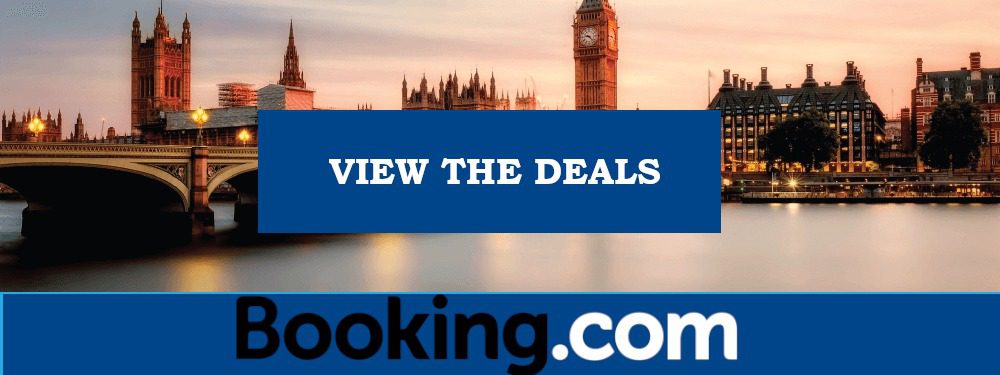10 Most Popular Places to Visit in Central London: Ultimate Tourist Attractions
London is simply an extraordinary place. Whether you are a visitor to London, or live in the city, you will be awed by the almost unlimited opportunities and places to visit in central London. Explore world-class activities, restaurants, cultural spaces, and history everywhere you go.
Samuel Johnson, the 18th century writer (also famous for also creating the first English Language dictionary) exclaimed that “when a man is tired of London, he is tired of life”. In one pithy phrase, he was able to describe London across the centuries. This axiom is as true today as it was three hundred years ago. Indeed, few cities can compare to London when it comes to the vast array of work, play and life opportunities the city offers.
London is bursting with attractions that are popular with both tourists and locals. Even for long-term residents of the city, a life-long love affair with London can be renewed with the discovery of new places to visit in central London, and further afield. Adventures both on – and off – the beaten track are sure to present almost unlimited opportunities to discover (and rediscover) the many worlds that constitute London.
But to start on the beaten track, take have a look at ten most popular attractions and best places to visit in central London.
The British Museum
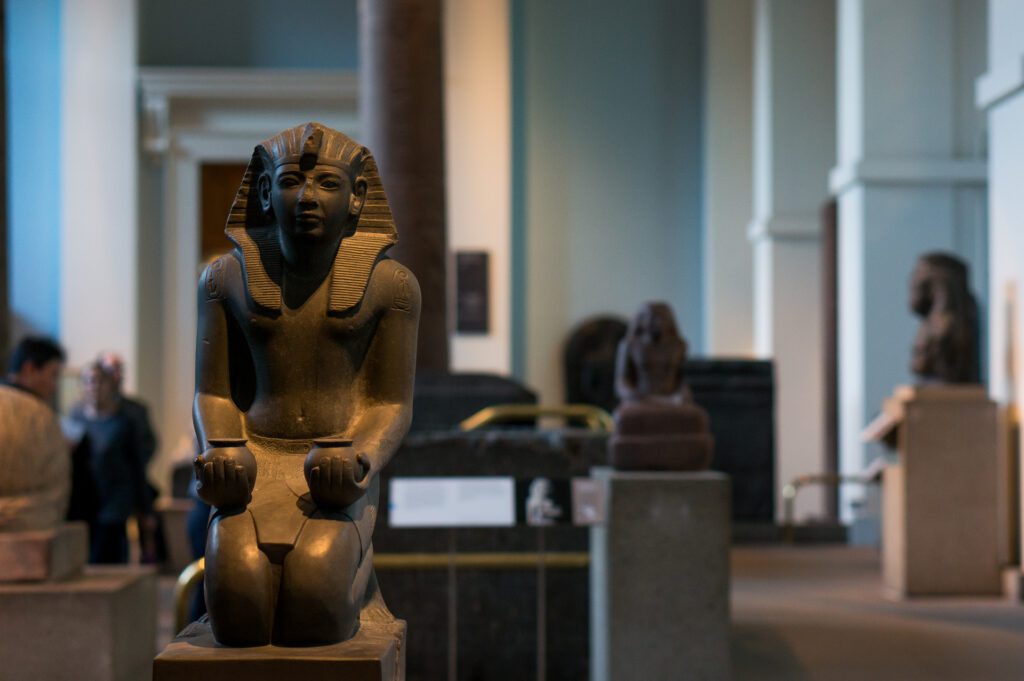
Visitors can spend hours – if not days – exploring the vast collection held in the British Museum. The Museum is located centrally in Bloomsbury, close to Russell Square.
Almost seven million people visit the popular attraction annually, making it the most visited London attraction. The British Museum is undoubtedly one of the best places to visit in London. Visiting the permanent exhibitions is completely free. The Classical architecture of British Museum was updated by the addition of a stunning covered inner courtyard with a glass ceiling. At its centre, lies the famous reading room where Lenin (under the name Jacob Richter), Karl Marx, and Sir Arthur Conan Doyle all worked on their manuscripts.
Wander beyond the courtyard and discover one of the world’s largest archaeological collections tracking the expanse of human history through art and culture. The most visited objects in the collection are the Rosetta Stone, the artifact that unlocked the meaning of Egyptian hieroglyphics, and the Elgin Marbles from the Parthenon in Athens. Galleries filled with thousands of artifacts are arranged thematically. These include Americas, Animals, China, Death and Memory, Desire, Love and Identity. Africa and Egypt. Get lost among these treasures!
The Tower of London
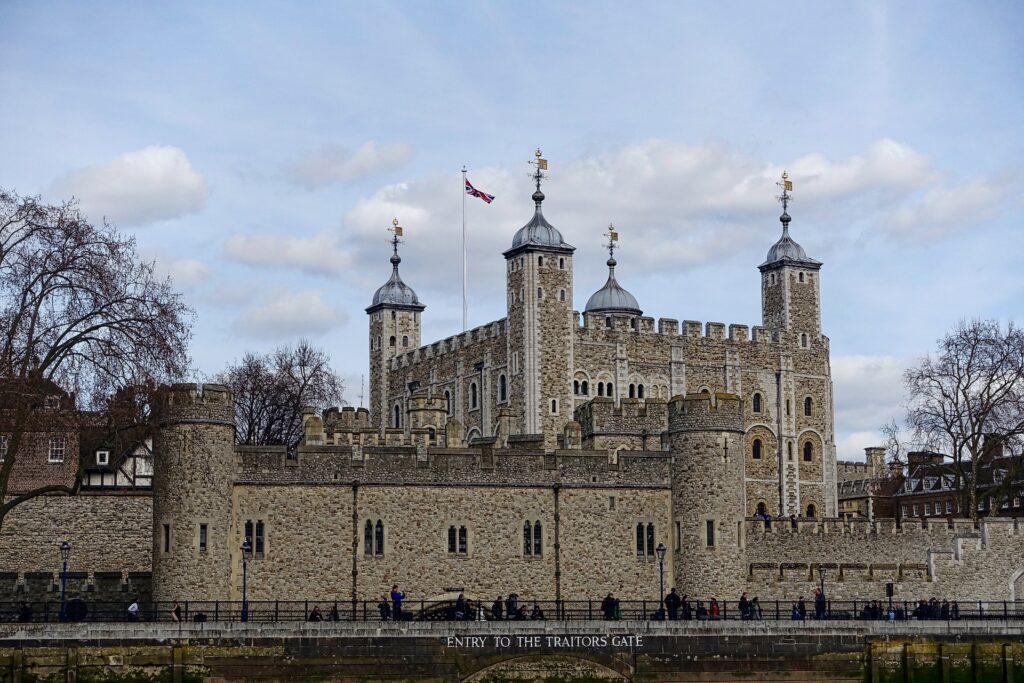
Situated on the north bank of the Thames, close to the iconic Tower Bridge, the Tower of London is officially known as His Majesty’s Royal Palace and Fortress of the Tower of London.
The castle is one of London’s most famous places to visit in central London with almost 2.9 million visitors annually. The Tower has a long and colourful history. It was founded in 1066 as part of the Norman conquest of the British Isles. It was initially a grand palace and luxurious royal residence. Later, the Tower of London gained notoriety as an infamous prison, with the Green and Hill, sites of execution. Among its famous prisoners (some of whom were gruesomely executed) were three queens, a princess, earls, saints, dukes, archbishops, spies and traitors. The last people imprisoned in the Tower in 1952 were the infamous Kray twins, gangsters and murderers, although this sentence was for draft dodging.
Whilst the Tower is a paid attraction, it offers a fantastic experience to visitors of all ages. Explore the inner battlements that have protected the castle for centuries. Discover the Fortress, the White Tower with its 11th century Romanesque chapel. The Tower also houses the dazzling crown jewels, the celebrated collection of 23,578 gemstones, many on display during King Charles’ coronation. These treasures and the Tower are protected by the special regiment, the Yeoman warders (popularly known as Beefeaters) whose uniforms bear the cypher of the new king. The pomp of centuries-old ceremonial rituals can also be witnessed as the Tower Guard performs three daily ceremonies; the Ceremonial Opening, the Ceremony of the Word, and the Ceremony of the Keys.
Wander into the now accessible moat, the Superbloom, which is seeded with 20 million pollinator-friendly wildflowers seeds and highlights the role of nature in well-being.
Natural History Museum
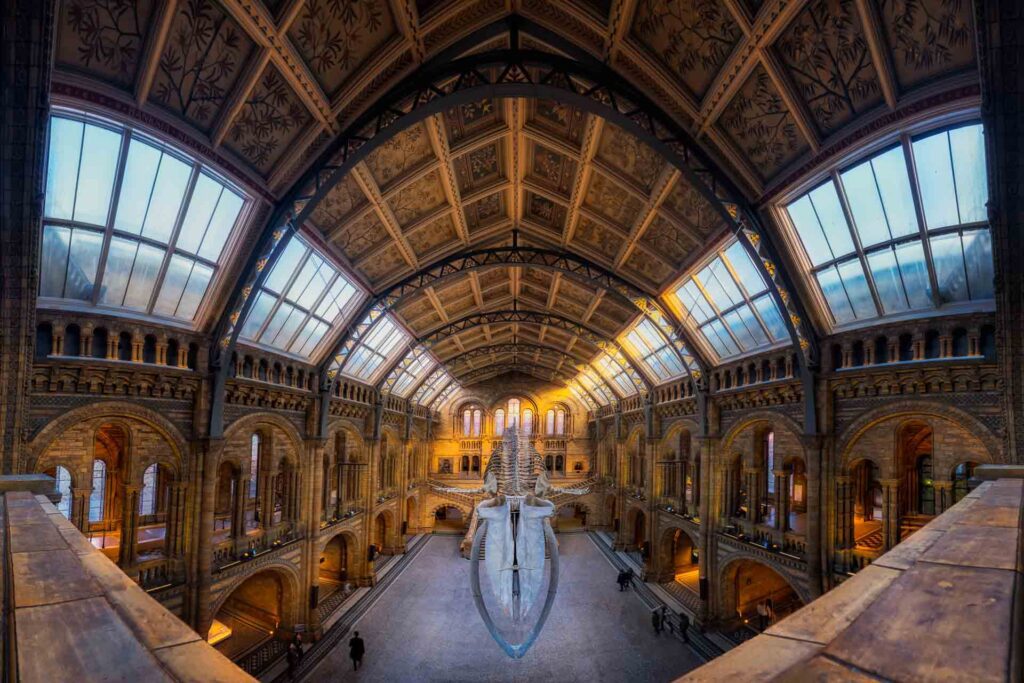
The Natural History Museum in South Kensington is situated in an imposing cathedral-like structure designed in a blend of Gothic Revival and Romanesque architecture. A visit to the museum is almost as compelling for this architecture as it is for the 80 million individual specimens that comprise the vast collection. Among the many places to visit in central London, the Natural History Museum is among the most beautiful.
The natural history collection covers botany, entomology, mineralogy, palaeontology, and zoology. With close to 5 million visitors annually, the Natural History Museum is the most popular natural history museum in Europe. Visitors are greeted on arrival in the Hintze Hall by an enormous 5 tonne Blue Whale skeleton suspended from the cavernous ceiling. This is the largest specimen in the collection.
Helpfully, the museum is divided into four colour-coded zones following broad natural history themes, each of which can be accessed separately via separate off-street entrances. Don’t miss the gleaming gemstones, minerals and rocks in the Earth Galleries’ Red Zone and the extinct Dodo in the Green Zone that thematically tracks the evolution of the planet. The dinosaurs, whales and volcano exhibitions are especially popular with families. Entrance into the permanent exhibitions is free of charge, although tickets must be purchased for temporary exhibitions.
The Science Museum

Next door to the Natural History Museum is the Science Museum which draws over 3.2 million visitors annually. Filled with iconic objects and stories of outstanding human innovation and ingenuity, the Science Museum will satisfy the most curious of minds.
Science is presented in an imaginative, accessible, and entertaining way. Whether its maths or medicine, carbons or computers, the exhibits are thoughtful and thought provoking. Stories tell of space missions, astronomy, flight, time, and the environment, among other things. Many of the Museum exhibits are interactive providing hands-on and experiential learning opportunities.
The Wonderlab and IMAX, both ticketed, are especially popular with families and young people. Admission to the general collection is free.
Tate Modern
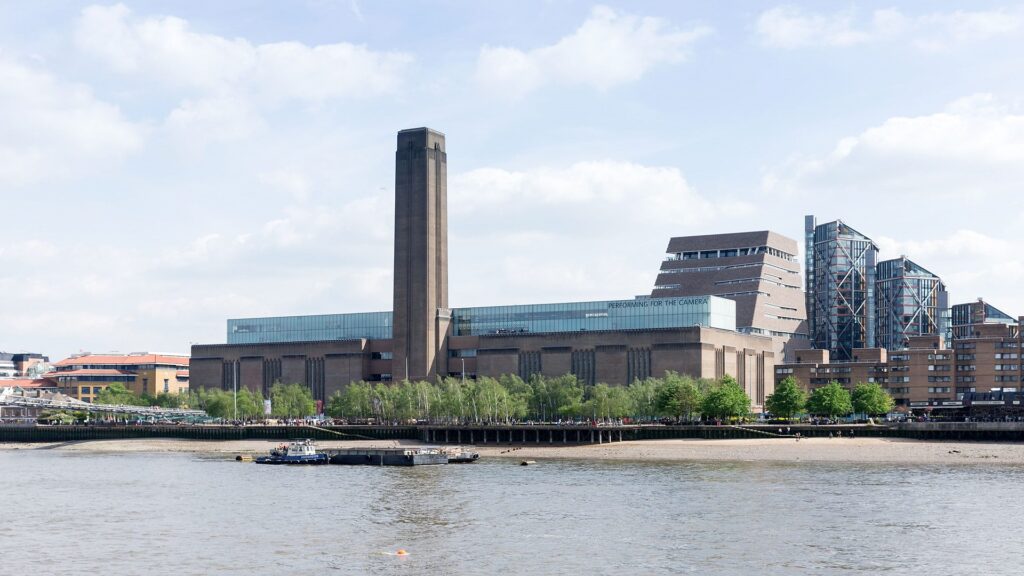
Located on the South bank of the Thames and enjoying river-front views of St Paul’s Cathedral and the City of London, Tate Modern is the most popular modern art gallery in the world. Over five and a half million visitors come through its doors annually, enjoying the UK’s foremost gallery for modern and contemporary art.
Once again, visiting the building – formerly the Bankside Power Station – is as fascinating as the art it houses. The collection itself is both extensive and extraordinary, reflecting a century of international modern art from early 1900s modernism to present day. Tate Modern’s massive exhibition spaces were further extended over recent years to accommodate even larger numbers of visitors and to display its massive collection of over 70 000 works. The renowned collection includes, among others, Pablo Picasso, Georges Braque, Claude Monet, Paul Klee, Damian Hurst, Salvador Dali and Roy Lichtenstein.
The main collection comprises eight thematic areas although some rooms are transformed periodically to show different works from the collection in line with the overall subject. The Turbine Hall, which once housed the electricity generators of the disused power station, is the largest area in the gallery. It is five stories high and offers a vast floor space used to exhibit large specially commissioned works by contemporary artists from across the globe. Like many places to visit in central London, entrance to the permanent collection is free, and very worth a visit. Without doubt, Tate Modern is one of the best places to visit in London.
The Victoria and Albert Museum
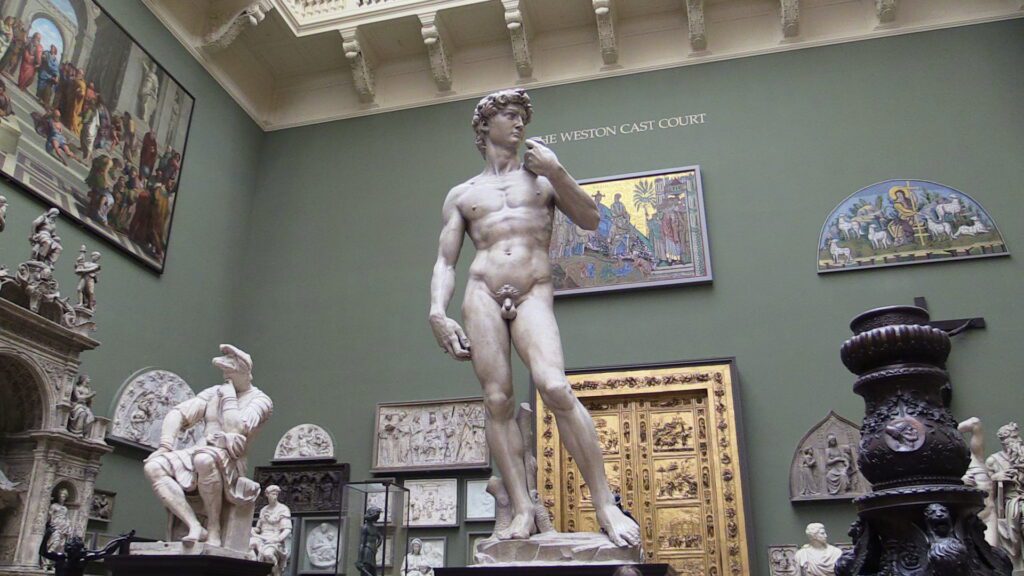
The Victoria and Albert Museum – known informally as the V&A – is the largest museum of design and applied and decorative arts in the world. A remarkable fact is these vast galleries, 147 in number, span 7 miles (over 11km) in length. Admission to see the permanent collection of over 4.5 million objects is free. These objects and artifacts reflect 5,000 years of human creativity. Many of the UK’s national collections are held in the V&A.
The collection encompasses ceramics, glass, books, design, prints and posters, paintings, textiles, furniture, architecture, photography, costumes, fashion, theatre and performance, and Asian art. The building itself is a superb example of Victorian architecture. The museum lays on activities and workshops for families and children, especially during school holidays. The V&A is among one of the most interesting and absorbing places to visit in central London.
Somerset House
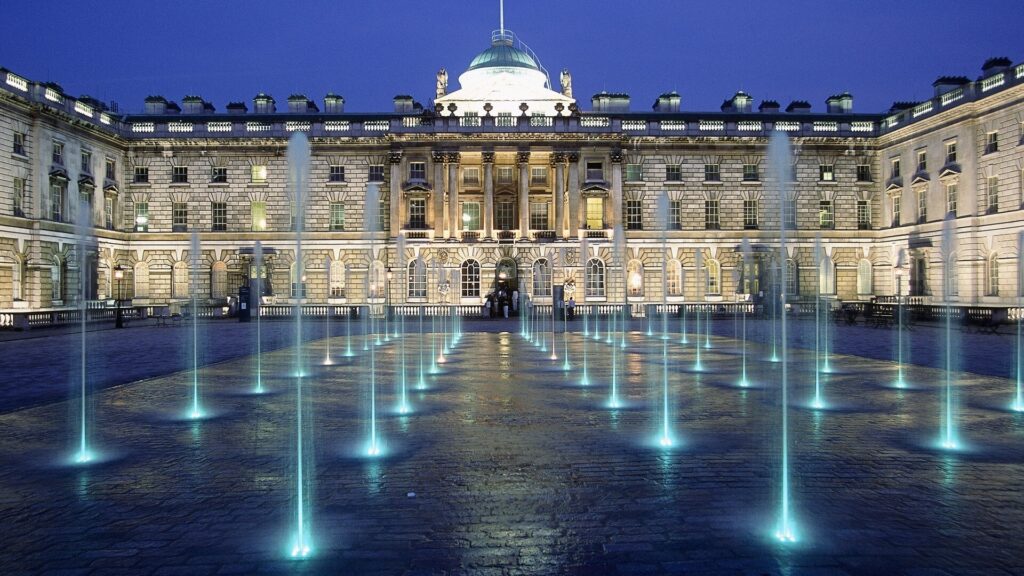
Originally the site of a Tudor castle and situated on the north bank of the Thames, between Aldwych and Trafalgar Square, Somerset House is a vibrant centre for visual arts and culture. It provides a global platform for experimental and innovative artists and makers to connect with the public. Almost three and a half million visitors come to Somerset House each year.
Somerset House is an impressive 18th century neoclassical building that encloses a Georgian quadrangle that is a popular outdoor ice-skating rink in winter, and water fountains in summer. In the summer months, the courtyard is also an outdoor concert venue for contemporary music.
Somerset House is one of the notable places to visit in central London both for its architecture and cultural and historical significance. Over the centuries, Somerset House has had numerous incarnations. It has been home to numerous institutions including the Royal Academy, the Royal Society, the Royal Geological Society, the Navy Office, various tax and Inland Revenue offices, Register of Births, Deaths and Marriages, among others. Currently, the complex is divided into creative business spaces on the upper floors and public activities on the ground floor.
Always encouraging debate and dialogue, Somerset House presents boundary-breaking exhibitions to champion ideas and nurture creativity.
A not-to-be-missed highlight of Somerset House is the Courtauld Gallery. The Gallery house a collection of masterpieces ranging from the middle ages to twentieth centrury. The permanent collection includes paintings, drawings, sculptures, prints and the decorative arts. Smaller temporary exhibitions are also highly recommended.
The National Gallery
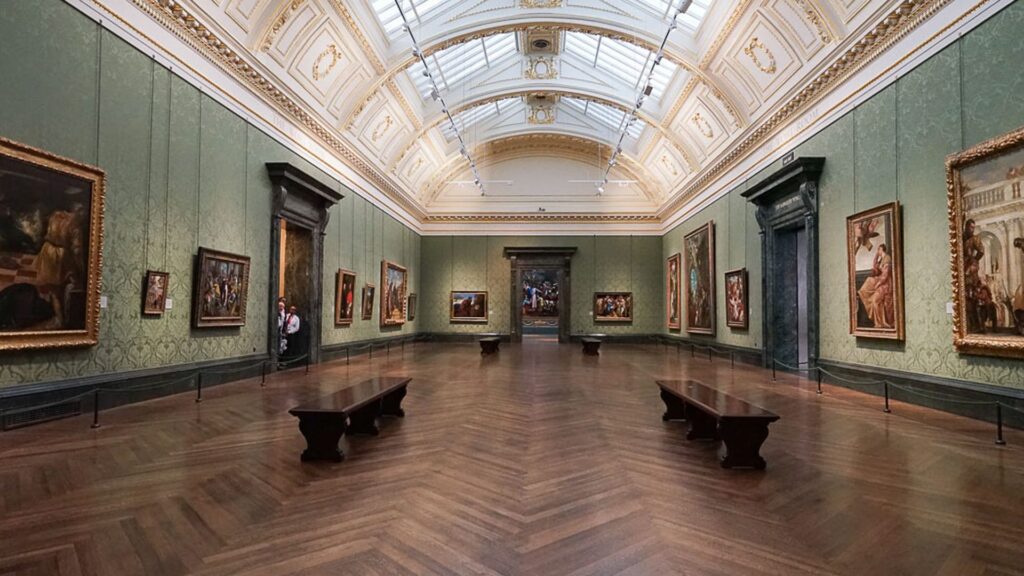
With over six million visitors, the National Gallery is renowned for its world-class collection of famous European paintings. Admission to the permanent exhibition is free. The National Gallery is highly recommended among places to visit in central London.
Almost 200 years old, the National Gallery houses a collection of over 2,600 paintings dating from the mid-13th century to the early 20th century. The Gallery’s exhibits are organised chronologically. All the major Western European artistic movements are represented in the extensive collection. The galleries which begin with art from the late medieval period, track the Enlightenment and Renaissance, and close with the Impressionist movement. From Bellini to Botticelli, Michelangelo to Monet and Canaletto to Cezanne, this impressive collection features the most significant European artists of their time.
The London Eye
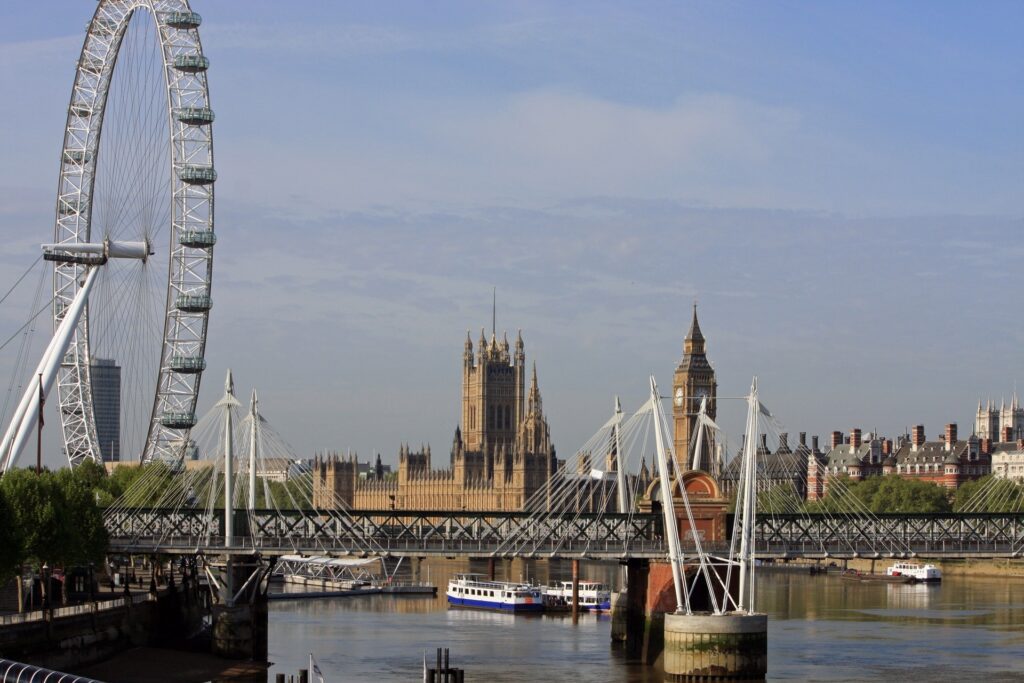
If you enjoy orienting yourself in a new city from a height, the London Eye is the perfect place to look down on the London cityscape below. At 443 feet (135 metres) high, the London Eye is the tallest Ferris wheel in Europe. The London Eye is found near City Hall on the Thames. With 3 million visitors annually, the London Eye is the most popular paid attraction in London.
Since its opening in 1999, the London Eye has become an iconic London landmark, and offers unobstructed views of the city. The views are breathtaking and awe-inspiring. Indeed, on a clear day, visitors can see many notable attractions including the Houses of Parliament (with the Elizabeth Tower containing the bell, Big Ben), Buckingham Palace, the Shard and even Windsor Castle, some 25 miles away.
At night the London Eye is illuminated with LED lights. From dusk, these change the cityscape into a twinkling dreamscape.
Cantilevered over the Thames, the London Eye carries 32 pods corresponding with the number of boroughs that, with the City of London, constitute Greater London. Each ovoid glass pod or capsule allows for unencumbered views from all angles and holds up to 25 visitors. A single rotation lasts 30 minutes (the Eye is only stopped to allow disabled passengers to embark and disembark).
National Portrait Gallery

Finally, attracting almost 2 million visitors annually, the National Portrait Gallery is located close to Trafalgar Square and the National Gallery. Its one of the best places to visit in London with its remarkable collection of portraits.
The Gallery celebrates British portraiture from the 8th century to today. The subjects of the portraits are notable are historical, political and cultural British figures. In selecting portraits for the National Portrait Gallery collection, the sitter, or subject, is considered more critical than the artist. As such, the portraits capture the most influential people of their era, whether aristocrats, stars or celebrities.
The National Portrait Gallery was the first gallery of its kind in the world, and presently houses the largest collection of portraits globally. The enormous collection includes over 11, 000 portraits, drawings, miniatures, and sculptures. In addition, there are 250,000 photographs and negatives, and 80,000 prints and caricatures.
The Gallery has undergone extensive refurbishment and reopened in 2023. Alongside its permanent galleries for which admission is free, the National Portrait Gallery shows extensive contemporary works of portraiture, including the BP Portrait Competition.
Whilst these are the ten most popular attactions and places to visit in central London, the city offers almost countless attractions. I have covered some of my favourites in other blog posts, 16 Secret Tourist Attractions in London, Come explore ten more secret gems and local delights in London, and, Wander Through Wonderful Westminser.
If you want to support our blog, please make your flight and hotel bookings at no extra cost to you by clicking onto the adverts (we make a small commission to keep the blog going).
You can book through the link to anywhere in the world, but, of course, we encourage you to come explore London!


